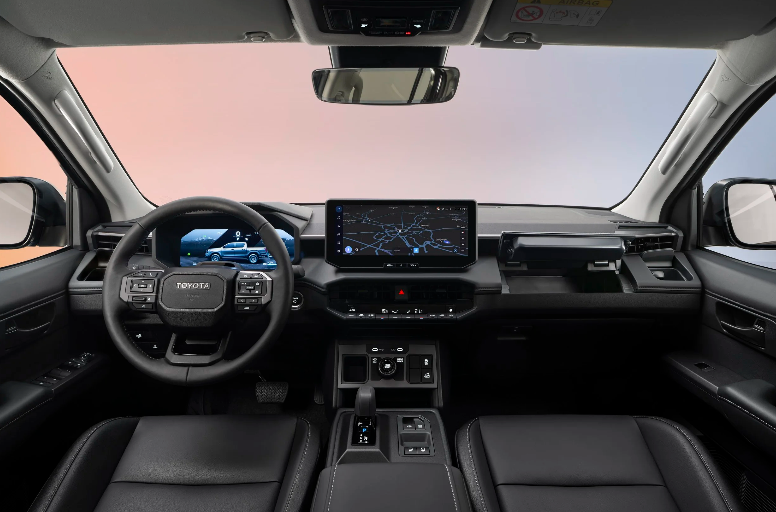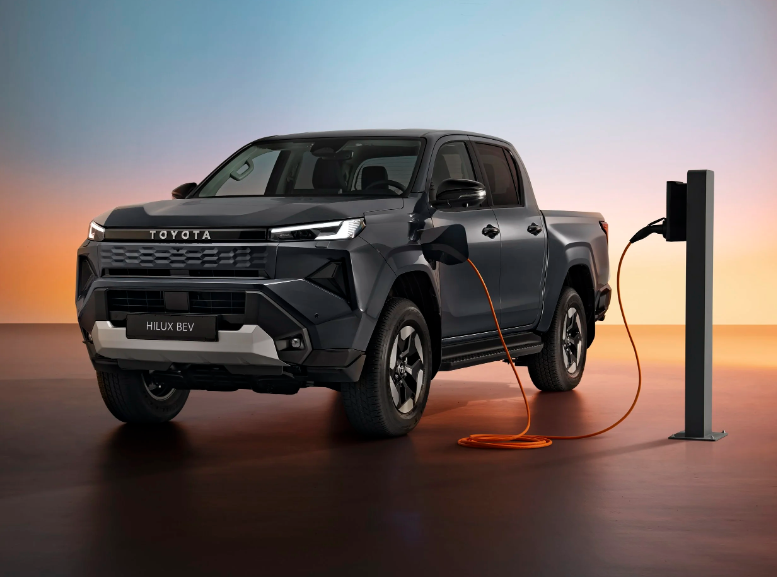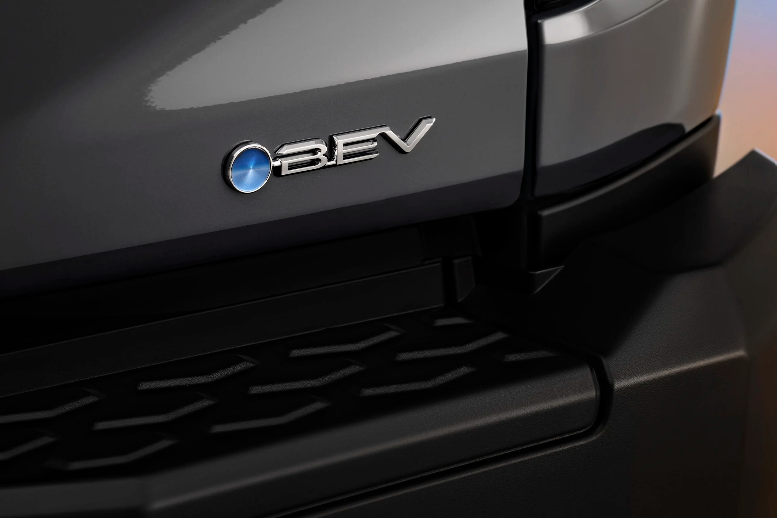LATEST NEWS
Will battery Hilux go the distance?
Richard Bosselman
November 13, 2025
Factory data suggests breakthrough BEV is good for grunt but not so flash for range, hauling or hefting stuff.
GOING electric is a big headline for the Toyota Hilux, but in respect to how far and even where you might get in that derivative … well, that’s perhaps less of a good story.
Regional rollout of the new model is a dead cert, but so far only Toyota Australia has signed on.
It has suggested the model’s primary application will be in the mining industry, where electric utes - including local conversions of the Landcruiser 70-Series - are already a thing. A zero emission vehicle is a very good thing for underground activity.
But what about out in the big wide world above? Toyota is promoting the ideal of the mains-replenished tray deck as potentially being a good choice for those construction companies looking to create zero-emission and low-noise city centre worksites.
But for Kiwis, that’s a secondary undertaking.
Should we be suspicious that there’s been no talk about how this dual motor (so all-wheel-drive) variant might fare in the places Hilux is seen more often in NZ; down rural roads and out on farms?
Should we ask why is it that Toyota New Zealand has so far identified interest in just the diesel types - announcing its lineup of those overnight - and said little about the electric, beyond identifying that it exists and will also be out in 2026?
If the national market leader is reluctant to yet comment or commit, it’d be easy to understand why.
Data relayed from elsewhere around the world about the type’s range is, to employ a Barry Crump-ism, ‘not flash’.
Toyota Europe has spilled data about the type’s performance, range, towing ability and how much it will take on the deck - all information that has yet to arrive from the local representative.
The Hilux BEV is good on the grunt side: With a 82kW/205Nm electric motor up front and a 129kW/269Nm rear unit, it delivers a combined output of 144kW, not far off a diesel version's 150kW.
But if it’s up for a good time, it might not be for a long time.
Toyota having engineered in a small battery seems the core issue. That 59kWh unit allows for a range of 240km at best. It also means payload weight falls to 715kg and it can only tow 1600kg.
The range is based on laboratory testing to the WLTP standard that becomes the sole economy measure new vehicle distributors will be allowed to use here from December 31.
The more lenient NEDC standard shows it to be capable of more than 300km, but that scale was lambasted by regulators here years ago as being utterly realistic - hence why the national decision to simply use WLTP.
It would make the Hilux one of the shortest-range battery vehicles on sale regionally, according to a leading Australian website, Drive.com.au.
The site also offers this sobering proposal: “With a trailer attached, and at motorway speeds – which tests of other electric utes in the United States have shown can more than halve driving range – it may struggle to cover more than 100km on a single charge.”
It says for the Hilux BEV to get from Sydney to Melbourne, a 847 kilometre eight hour drive, would require it to undertake at least three charging stops. Conceivably, though the driving distance between Toyota NZ headquarters and downtown Wellington is but 143km, given the terrain if taking Transmission Gully (one of the steepest motorway inclines in NZ), it might also be gasping before journey’s end.
The cost of going into the Green machine is also set to carry a premium. While pricing for Australia won’t be announced until next year, in Thailand where all Hilux are built, it costs 10 percent more than the Hilux SR5 Limited, which is considered the closest equivalent on specification. That model is to be a $62,990 ask here.
The data suggests the Toyota is well behind the sole electric ute so far sold here, the LDV eT60, which was single motor - so without any off-road chops- and needed 88.6kWh to extract 330km WLTP.
Isuzu has an electric D-Max, though not here, that achieves 263km WLTP, with a 66.9kWh battery.
Toyota Europe claims "best-in-class charging capabilities" for the HiLux BEV, which Drive.com.au wryly notes “may not be a difficult feat” given the D-Max EV needs an hour to charge from 20 to 80 percent, double or triple the time that most family electric cars require.
Information published in Thailand lists peak charging power of 125kW DC for the HiLux – compared to just 50kW for the D-Max – and 11kW AC.
The Toyota Europe pack says electric all-wheel drive and clever software replace the diesel ute's mechanical four-wheel-drive system, low-range transfer case, and locking rear differential.
Toyota touts a version of the diesel's Multi-Terrain Select off-road drive-mode suite that it claims is "equivalent to driving in L4 (low) range in a conventionally powered vehicle.”
Thai specifications show the battery pack trims 10mm off the HiLux BEV's ground clearance, though the diesel’s wading depth is carried over. There are said to be “specific measures to protect the battery from damage or water ingress.”
The battery-powered version also uses De Dion rear suspension, a configuration that moves the axle shafts – the components transfer drive to the wheels – from inside the rear suspension's transverse structural member, to outside it.
The electric version swaps the conventional gear selector for a compact ‘e-shifter’. The diesels’ four-wheel-drive controller is absent; the differential lock and auto engine stop-start buttons also.
In Australia, the HiLux BEV will be offered in SR and SR5 model grades – both with the diesel version of the latter's 12.3-inch instrument cluster as standard – in a dual-cab body.
Visual differences between the BEV and diesel Hilux include a closed-off front grille, and unique 17-inch aero-style alloy wheels.





